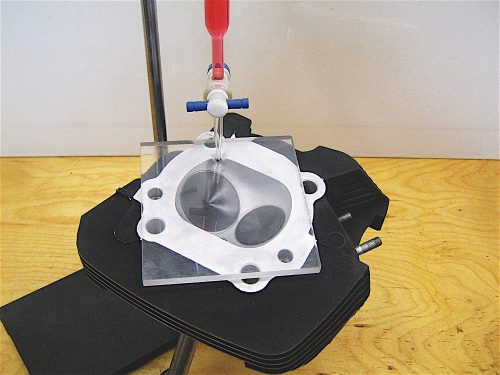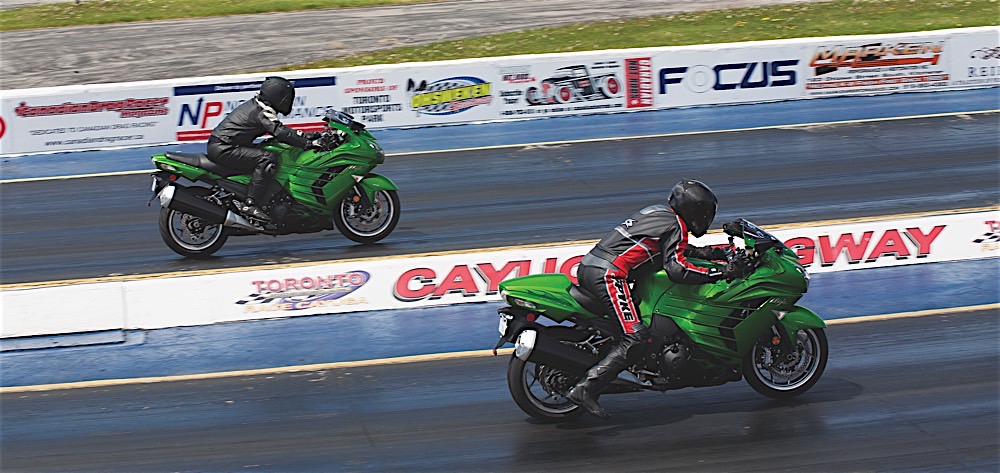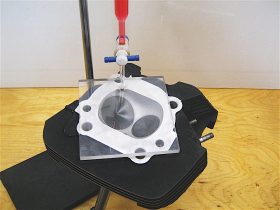We know you like to hold onto your beloved issues of Motorcycle Mojo, but you’ll want to take extra care with this one; this month’s Mojo Garage includes some mathematical equations you may always have wondered about, but never knew where to find. Who knows? You might find them useful, or even just have some fun with them.
Engine displacement: π × (radius of bore)2 × stroke = cylinder displacement × number of cylinders
As an example, for the engine displacement calculation we’ll use a Honda NC700X, which has a bore and stroke of 73 × 80 mm. For the first part of the equation, pi (3.14) is multiplied by the radius of the bore squared. The radius of the bore is half its diameter, so 73 ÷ 2 = 36.5 mm, which is then squared: 36.5 × 36.5 = 1332.25 mm. That number is then multiplied by 3.14: 1332.25 × 3.14 = 4183.26 mm, and then by the stroke measurement of 80 mm: 4183.26 × 80 = 334,661 mm3.
 That is the volume of one of the NC700X’s cylinders in cubic millimetres. To get the displacement in cubic centimetres (cc) just divide by 1000, which equals 334.66 cc, and then multiply by the number of cylinders: 334.66 × 2 = 669.32. Round that off to the next cubic centimetre, and the Honda NC700X has an engine displacement of 670 cc. Simple, yes?
That is the volume of one of the NC700X’s cylinders in cubic millimetres. To get the displacement in cubic centimetres (cc) just divide by 1000, which equals 334.66 cc, and then multiply by the number of cylinders: 334.66 × 2 = 669.32. Round that off to the next cubic centimetre, and the Honda NC700X has an engine displacement of 670 cc. Simple, yes?
Compression ratio: (cylinder displacement + combustion chamber volume) ÷ combustion chamber volume
This is a tricky one, because you must know the volume of the combustion chamber. That’s the volume of the space in the cylinder that is above the piston when the piston is at the top of its stroke, and it includes the head gasket thickness and any dome or valve pockets on the piston top.
To measure the volume of a combustion chamber, the cylinder head must be taken off the engine, turned upside-down with the valves, sparkplug and head gasket in place, and a flat piece of thick acrylic glass with a hole in it placed on the head gasket surface. Liquid is then introduced into the cylinder head using a burette, which is a transparent tube with a valve at the bottom and a scale along its length. The amount of liquid it takes to fill the combustion chamber is then noted, in cubic centimetres.
For this example, I offer up a Yamaha R6. With a bore and stroke of 67 × 42.5 mm, it has a cylinder displacement of 149.8 cc. Let us assume it has a combustion chamber volume of 12.4 cc. Add the cylinder volume to the combustion chamber volume: 149.8 + 12.4 = 162.2. Now divide that by the combustion chamber volume: 162.2 ÷ 12.4 = 13.08. Round off to the nearest tenth decimal point, and the R6 has a compression ratio of 13.1:1. Note that this is the mechanical compression ratio; the effective compression ratio varies depending on cam timing.
With this equation at hand, and knowing the bore, stroke and compression ratio of your bike, which are all in the spec sheet, you can reverse-calculate the combustion chamber volume by trying different numbers until you achieve the published compression ratio.
Final drive ratio: rear sprocket teeth ÷ front sprocket teeth
This is a very easy calculation, and can be handy if you are considering altering your sprocket ratios for either quicker acceleration or more relaxed highway cruising, or if you decide to change drive systems, like going from a belt drive to a chain, maybe to allow for added clearance when installing a wider rear wheel.
Simply divide the number of teeth on the rear sprocket by the number of teeth on the front sprocket. A Kawasaki Ninja 300 has a 14T front sprocket and a 42T rear sprocket. Therefore: 42 ÷ 14 = 3, or a final drive ratio of 3.0:1. The higher the number is, the quicker the acceleration – a lower number means slower acceleration. If you wanted more relaxed highway cruising, you could aim for a ratio of about 2.8:1, which would mean you’d swap out the 42T rear sprocket for a 40T, or the 14T front sprocket for a 15T.
Deciding which sprocket to replace is a matter of cost and fit: the front is less expensive, but its larger diameter means it might not clear the crankcase. A smaller rear sprocket might mean you’d have to shorten the drive chain.
On the other hand, a larger rear sprocket may mean buying a longer chain.
Estimated horsepower from quarter-mile ET: total weight ÷ (ET ÷ 5.92)3
This is my favourite, but you must know the total weight of your bike with you on it, and you must have a quarter-mile elapsed time (ET). You can use the wet weight of your bike and add your weight with all your riding gear (be honest), and you’ll get a ballpark horsepower figure for your bike, though you can seek out a truck scale and roll your rig onto it for a more accurate measure.
Say you spent the weekend at a local drag race meet with your highly modified Dyna Glide, and your best time was 11.75 seconds (good for you!). You weighed yourself and your bike, and the total is 850 lb. Divide your ET by 5.92: 11.75 ÷ 5.92 = 1.98. Now multiply 1.98 × 1.98 × 1.98 = 7.762. Divide your weight by that number: 850 ÷ 7.762 = 109.5. Your bike produces approximately 110 hp, and that’s at the rear wheel (again, good for you!).
Get out your calculators, have at it and have fun.
Technical articles are written purely as reference only and your motorcycle may require different procedures. You should be mechanically inclined to carry out your own maintenance and we recommend you contact your mechanic prior to performing any type of work on your bike.











